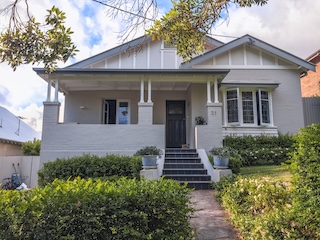Port Melbourne suburb profile
Port Melbourne is a vibrant bayside suburb located just 5km southwest of Melbourne's CBD, known for its rich maritime history and modern urban lifestyle. The area boasts a stunning waterfront with sandy beaches, scenic walking trails, and the iconic Station Pier, which serves as a gateway for cruise ships. Port Melbourne offers a mix of historic cottages, contemporary apartments, and luxury developments, attracting a diverse community of professionals, families, and retirees. With its bustling Bay Street shopping precinct, trendy cafes, and excellent public transport links, Port Melbourne combines coastal charm with city convenience, making it a sought-after destination for residents and visitors alike.
Port Melbourne property market performance
Current median dwelling price$1,102,500Past 3 months
Property growth-3.9%Past 12 months
Port Melbourne's property market has remained stable over the past 12 months, with no change in median house and unit values. The median house price stands at $1.55 million, while units are priced at $655,000, indicating consistent demand in the area.
Sales activity has been moderate, with 27 houses and 45 units sold in the past three months. Houses are selling faster than units, with a median of 48 days on the market compared to 81 days for units, suggesting a stronger demand for houses.
The rental market in Port Melbourne has seen some movement, with house rents increasing by 2.3% and unit rents rising by 6.2% over the last 12 months. The average rent for houses is $895, while units average $690, reflecting a healthy rental demand.
| Houses | Units | |
|---|---|---|
Median price Past 3 months | $1.55M | $655K |
Change in value Past 12 months | -3.3% | -4.5% |
Sold Past 3 months | 27 | 45 |
Median days on market Past 12 months | 48 | 81 |
Average rent Past 12 months | $895 | $690 |
Change in rent Past 12 months | 2.3% | 6.2% |
5 year median price trend for houses and units
Port Melbourne demographics
Port Melbourne, a vibrant suburb located just a stone's throw from Melbourne's CBD, is renowned for its blend of urban living and seaside charm. With a population of 17,633, the area attracts a diverse mix of residents, from professionals to families, all drawn to its unique lifestyle offerings. The median age of 42 suggests a mature community, with many residents likely enjoying the balance of city convenience and coastal relaxation.
The suburb's housing landscape is varied, with a significant portion of properties being rented, accounting for 44.4% of the market. This rental trend is indicative of Port Melbourne's appeal to those seeking flexibility, including young professionals and transient workers. Meanwhile, 26.4% of homes are owned outright, and 29.2% are owned with a mortgage, reflecting a stable base of long-term residents and new homeowners investing in the area.
Family dynamics in Port Melbourne are diverse, with couple families without children making up 48.6% of the community, while couple families with children account for 35.4%. This mix highlights the suburb's appeal to both established families and those enjoying a more independent lifestyle. The area's proximity to the beach, parks, and the city, combined with a median household income of $2,372 per week, underscores its status as a desirable location for those seeking a high quality of life in Melbourne.
Port Melbourne infrastructure, key developments and investment opportunities
Port Melbourne is experiencing significant developments that could impact its property market. The $1 billion redevelopment of Station Pier, set to conclude by 2026, aims to revitalize the area with new retail, residential, and entertainment options, potentially boosting local property values. Additionally, several mixed-use projects in the Port Melbourne CBD, including a 20-storey tower on Bay Street, are set to modernize the area and increase housing supply.
The suburb is also benefiting from improved transport infrastructure, with upgrades to tram routes and the planned Port Melbourne Transport Hub enhancing connectivity. These developments, combined with Port Melbourne's desirable bayside location and proximity to the CBD, are likely to sustain strong demand for properties. The ongoing transformation from its industrial past to a modern, mixed-use precinct is positioning Port Melbourne as an increasingly attractive area for both residents and investors.
Port Melbourne rental market trends
The rental market in Port Melbourne has experienced moderate growth, with house rents increasing by 2.3% over the past year to $895 per week, while unit rents have seen a more significant rise of 6.2% to $690 per week. This bayside suburb continues to attract renters and investors alike, offering a blend of urban convenience and coastal lifestyle.
Suburbs near Port Melbourne
Some popular suburbs near Port Melbourne include:
How does Port Melbourne compare to nearby suburbs?
- Median house prices: Port Melbourne’s median house price is 38.4% higher than Newport’s.
- Median unit prices: Port Melbourne’s median unit price is 6.7% higher than Docklands’s.
- House price growth: Over the past 12 months, house prices in Port Melbourne have grown 0.0% higher than in Newport.
- Unit price growth: Over the past 12 months, unit prices in Port Melbourne have grown 6.6% higher than in Newport.
- Selling speed for houses: Properties in Port Melbourne are selling 42.2% faster than in Docklands.
- Selling speed for units: Properties in Port Melbourne are selling 26.4% faster than in Docklands.
- Investment considerations: In Port Melbourne, the rental yield for house is 44.8% higher than the Melbourne average, while the rental yield for units is 23.2% higher.
- House price growth: Over the past 12 months, house prices in Port Melbourne have grown 58.4% higher than the average rate of growth across Melbourne.
- Unit price growth:Over the past 12 months, unit prices in Port Melbourne have grown 25.2% higher than the average rate of growth for units across Melbourne.

